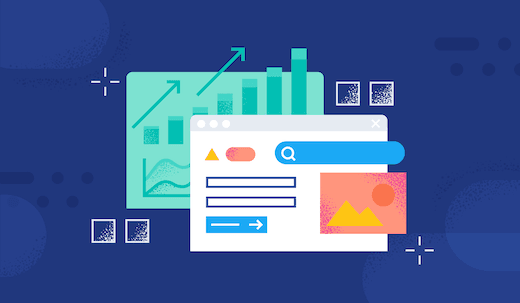
Unlocking the Power of Unified Observability: A Roadmap for Future-Ready Organizations
In today’s always-on digital economy, visibility isn’t optional — it’s essential. But as cloud-native architectures grow more complex and data volumes explode, traditional monitoring tools simply can’t keep up. That’s where modern, unified observability comes in.
This guide breaks down how your organization can move from reactive troubleshooting to proactive optimization using unified observability. Whether you’re battling siloed systems, escalating cloud costs, or inconsistent user experiences, the right observability strategy can turn your data into a powerful growth driver.
In a world where data volumes are exploding and digital experiences define customer loyalty, modern observability is no longer a luxury — it’s a competitive necessity. Whether you’re managing multi-cloud infrastructure, driving DevOps initiatives, or future-proofing enterprise operations, your ability to harness observability data directly impacts productivity, customer satisfaction, and revenue growth.
But what exactly is “modern observability,” and why is a unified strategy essential in 2025 and beyond?
Let’s break it down — and more importantly, show you how to turn observability into a growth engine for your organization.
What Is Modern Observability — And Why Does It Matter?
Modern observability goes beyond logs, metrics, and traces. It’s about creating context from chaos. Elastic defines it as the ability to unify and correlate vast volumes of data from across your business — from app performance to customer interactions — so you can find not just the signal, but the story.
In practice, this means:
Faster root cause analysis with AI and ML-powered insights
Elimination of data silos by integrating across DevOps, business, and security
Actionable intelligence that drives innovation and supports strategic growth
According to Seagate, only 32% of organizational data is actively used. The rest? Expensive noise. Modern observability changes that.
From Data Overload to Decision Intelligence
The real challenge isn’t collecting data — it’s putting it to work. Traditional monitoring tools often result in fragmented visibility, long repair cycles, and reactive firefighting.
Modern observability solutions like Elastic unify your view. Think fewer war rooms, faster time to resolution, and more proactive optimization. Case in point: DISH Media implemented Elastic and significantly improved both their analytics accuracy and innovation bandwidth by replacing manual processes with automated insights.
Similarly, UK Betting Company leveraged Elastic’s AIOps to reduce fraud by 84%, saving over $5 million annually.
These aren’t just IT wins — they’re business wins.
Why Unified Observability Is the Key to Transformation
Today’s businesses rely on complex, distributed systems: containers, microservices, serverless functions, and hybrid cloud. Each creates siloed metrics. The solution? A unified observability platform that consolidates tools, normalizes data, and gives every team a single source of truth.
Benefits of a unified approach:
Tool consolidation = lower costs and faster onboarding
Improved MTTR = less downtime, better customer experiences
Cloud-native readiness = seamless scale and automation
Predictable spending = resource-based pricing, no billing surprises
Data democratization = everyone sees the same truth
With AI and ML layered on top, observability moves from reactive to predictive. You’re no longer just spotting problems — you’re preventing them.
Choosing the Right Observability Strategy: Open Source vs. Commercial
Elastic’s guide makes it clear: organizations face a choice between open source, commercial, or open and extensible solutions. Each path has tradeoffs:
Open Source: Maximum flexibility, but high setup and maintenance overhead
Commercial: Fast setup and strong support, but potential vendor lock-in
Open & Extensible: Best of both — open standards (e.g. OpenTelemetry) with vendor support and future-proof customization
For a deeper breakdown of these models, read Vendor-Backed vs. Open Source Observability: What Enterprises Really Need.
By choosing a platform that supports open data models and APIs, businesses retain control over their telemetry and avoid painful migrations down the road.
Empowering Your People: The Human Element of Observability
Technology is only half the equation. Elastic stresses the importance of preparing your teams — from DevOps to executives — for cultural and operational change.
Key enablers:
Training: Build centers of excellence with ongoing enablement
Best practices: Transition gradually, with clear workflows and ownership
Collaboration: Break down data silos and encourage shared responsibility
Observability empowers generalists and specialists alike, boosting morale and performance across the board. As teams adopt more strategic roles — especially in SRE functions — their impact deepens. Learn more in The Expanding Role of Site Reliability Engineers.
Building a Roadmap for Observability Maturity
A successful observability journey follows a clear progression:
Discovery: Understand your current telemetry and gaps
Proof of Concept: Test real data with guided support
Customization: Tailor dashboards and alerts to business needs
Measurement: Establish KPIs for MTTR, deployment velocity, SLAs, etc.
Optimization: Continually tune processes and infrastructure for resilience
With a unified observability platform, you’re not just fixing what’s broken — you’re enabling your business to thrive in a dynamic, cloud-first world.
Real-World Impact: From Insight to Innovation
Consider the transformation at Glencore. By deploying Elastic, their DevOps team gained real-time visibility into trading applications across markets. The result? Faster support, better performance, and a measurable reduction in risk.
From finance and healthcare to media and retail, observability isn’t just about uptime. It’s about opportunity.
Final Thoughts: Why Now Is the Time
As data volumes soar and architectures grow more complex, the cost of poor observability is rising — in outages, customer churn, and missed innovation.
Modern, unified observability enables:
Proactive problem solving
Smarter resource use
Better collaboration
Transparent, predictable pricing
Your observability solution shouldn’t just monitor your business. It should empower it.
Ready to transform your observability strategy without overspending?
Get in touch with our team to schedule a free observability assessment and discover how O11yAI can help you reduce costs, streamline tooling, and unlock deeper insights from your existing platforms. Let’s build smarter, scalable observability together.